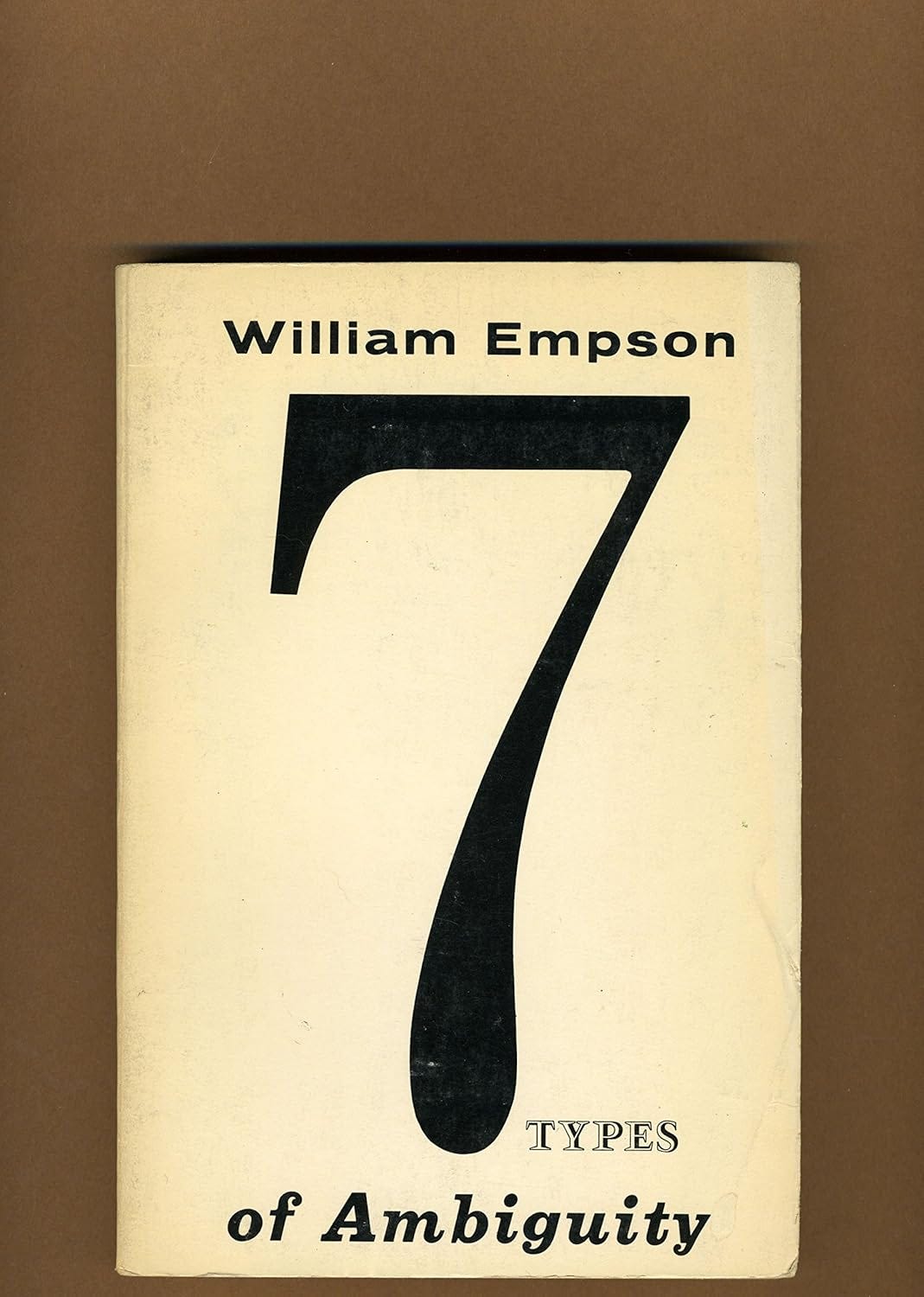As a Little Free Library steward, I often visit other LFLs looking for books my patrons might enjoy, but at the same time, I’m keeping an eye out for something I might want for myself. On at least a couple dozen occasions, I’ve stumbled on something unfamiliar to me, but intriguing, which I’ve taken, read, and enjoyed. The latest example is this book (pictured above) by Australian novelist Elliot Perlman. I was immediately struck by its title, which references William Empson’s work of the same name, a classic of poetry analysis which I attempted to tackle years before my current immersion in poetry. Perlman’s novel’s cover quotes the New York Times: “A bustling, kaleidoscopic Rashomonian novel.” The reference to Rashomon, Akira Kurosawa’s 1950 film, told from multiple perspectives, further attracted me to Pearman’s book, since in general, I enjoy novels with multiple narrators, and guessed that might be the case with this book.
And so it is. By page 4, we’ve met Empson, the dog owned by one of the main characters of the novel. By page 53, we’ve jumped to a second narrator, to whom we are drawn and whose story we don’t want to leave, until we do, and find ourselves compelled by the perspective of narrator #3. And so on. The book is funny, suspenseful, moving, and intellectually stimulating without being too hard to follow.
Now, I’m ready to tackle Empson (the writer, not the dog) again. I gave away my copy years ago when I ran out of gas on a first reading, but this time, I’m determined. In case you’re interested, but want the super-condensed version of Empson’s argument, here’s how Wikipedia boils it down:
The first type of ambiguity is the metaphor, that is, when two things are said to be alike which have different properties. This concept is similar to that of metaphysical conceit.
Two or more meanings are resolved into one. Empson characterizes this as using two different metaphors at once.
Two ideas that are connected through context can be given in one word simultaneously.
Two or more meanings that do not agree but combine to make clear a complicated state of mind in the author.
When the "author is discovering his idea in the act of writing..." Empson describes a simile that lies halfway between two statements made by the author.
When a statement says nothing and the readers are forced to invent a statement of their own, most likely in conflict with that of the author.
Two words that within context are opposites that expose a fundamental division in the author's mind.
I’ve quoted roughly half of the entire Wikipedia entry on Empson’s book, which is kind of ridiculous given the excessive length of many Wikipedia entries such as, say, one on Adam Sandler (not that I’m picking on Adam Sandler, mind you). Maybe once I’ve read Empson I’ll jump on Wikipedia and edit 7 Types’ woefully short entry.
Anyway, all this ambiguity gives me hope as I join with a group of poetry lovers this weekend to tackle two different poems, “Protocols” by Vikram Seth and “Una Palabra” by Gabriela Mistral. Empson reminds me that, and I quote Elliot Perlman in his novel, “...most good poetry contains ambiguity. It permits alternative responses, more than one interpretation.” In other words, not only is there not one right answer when confronted with an ambiguity in a poem, but that the whole point is that it’s ambiguous, and like a kaleidoscope, displays its multiple facets simultaneously.
I’ll end with a poem by Emily Dickinson, and ask you who’s the speaker (Dickinson herself?, a generic put-upon woman? a gun? A dog?). Discuss.
My Life had stood - a Loaded Gun -
In Corners - till a Day
The Owner passed - identified -
And carried Me away -
And now We roam in Sovreign Woods -
And now We hunt the Doe -
And every time I speak for Him
The Mountains straight reply -
And do I smile, such cordial light
Opon the Valley glow -
It is as a Vesuvian face
Had let it’s pleasure through -
And when at Night - Our good Day done -
I guard My Master’s Head -
’Tis better than the Eider Duck’s
Deep Pillow - to have shared -
To foe of His - I’m deadly foe -
None stir the second time -
On whom I lay a Yellow Eye -
Or an emphatic Thumb -
Though I than He - may longer live
He longer must - than I -
For I have but the power to kill,
Without - the power to die -





